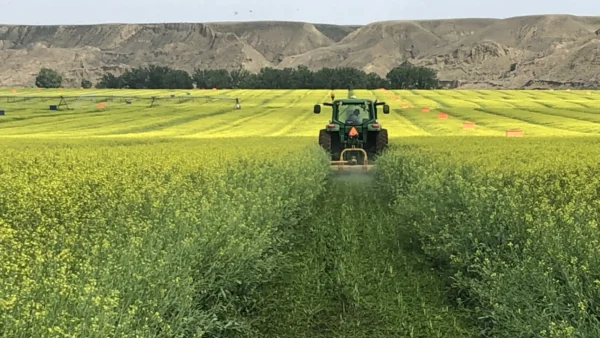The issue of sustainability is gaining widespread attention as more people recognize the importance of environmental health. This growing awareness is leading to increased emphasis on sustainable practices in various aspects of life, which has manifested in the regenerative agriculture movement.
The degradation of soil health is hugely important in regenerative ag. Alarming predictions from the United Nations suggest that if current practices persist, all harvestable soil could be lost within 60 years. However, there is hope as people become more informed and conscious of these issues, leading to a momentum behind sustainability.
Collective action is crucial to protect and preserve soil health in the long term. This involves adopting sustainable agricultural practices such as minimum or no till cultivations, nitrogen fixing cover crops, and responsible use of fertilizers and pesticides. Supporting initiatives for soil restoration and investing in research for innovative solutions are also important steps toward a sustainable future.
To address the problems in agriculture, it is necessary to recognize that the focus on productivity and larger yields has resulted in some negative consequences. It is crucial to shift from a productivity-centric mindset to one that considers the long-term health of ecosystems and resource preservation.
Multiple technologies and practices are available to reverse the problems in agriculture and establish a new paradigm that combines productivity with sustainability. One such approach is regenerative agriculture, which involves the use of technologies like precision application of crop inputs, new soil management practices, and renewable and regenerative crop inputs such as seaweed-based products, which Acadian Plant Health specializes in.
“At Acadian Plant Health™ we’ve been able to understand how our seaweed extracts can play a key role in bridging the gap between regenerative and conventional crop systems,” says James Maude, SVP at Acadian Plant Health.
“As a complimentary input, biostimulants such as our seaweed extracts, can combine with traditional crop protection or fertilizer to improve crop quality and yields, but also improve soil health. For instance, a key area of regenerative agriculture is soil health and restoring degraded soil. Acadian’s Ascophyllum nodosum seaweed extract is well documented and scientifically proven to improve soil micro-biodiversity, with increases in growth of arbuscular mycorrhizal fungi – an integral part of regenerative agricultural improvements.”
But that’s only half the story. Seaweed, a seemingly simple marine plant, absorbs carbon dioxide from the atmosphere through photosynthesis and can sequester large amounts of carbon in its biomass. In fact, seaweed captures carbon 20x faster than trees, addressing one of the key causes of the climate crisis.
Understanding just how much CO2 has been absorbed in seaweed beds was a recent focus for Acadian. It turns out 362 kg of CO2 is absorbed in every ton of seaweed Acadian harvests. That seaweed regrows at an amazingly fast past, so every year carbon is absorbed once again. A continuous regenerative cycle that holds huge potential to deliver on global climate goals.
Seaweed, with its ability to capture atmospheric carbon and improve soil health, plays a crucial role in a new era of agriculture. Applying seaweed technology to the land contributes to sustainable agriculture and helps reduce atmospheric carbon levels.
By adopting sustainable practices, and harnessing technologies like seaweed, we can create a more sustainable and balanced agricultural system. It requires ongoing innovation, collaboration, and a commitment to change, but the potential for a resilient and sustainable future in agriculture is within reach.









